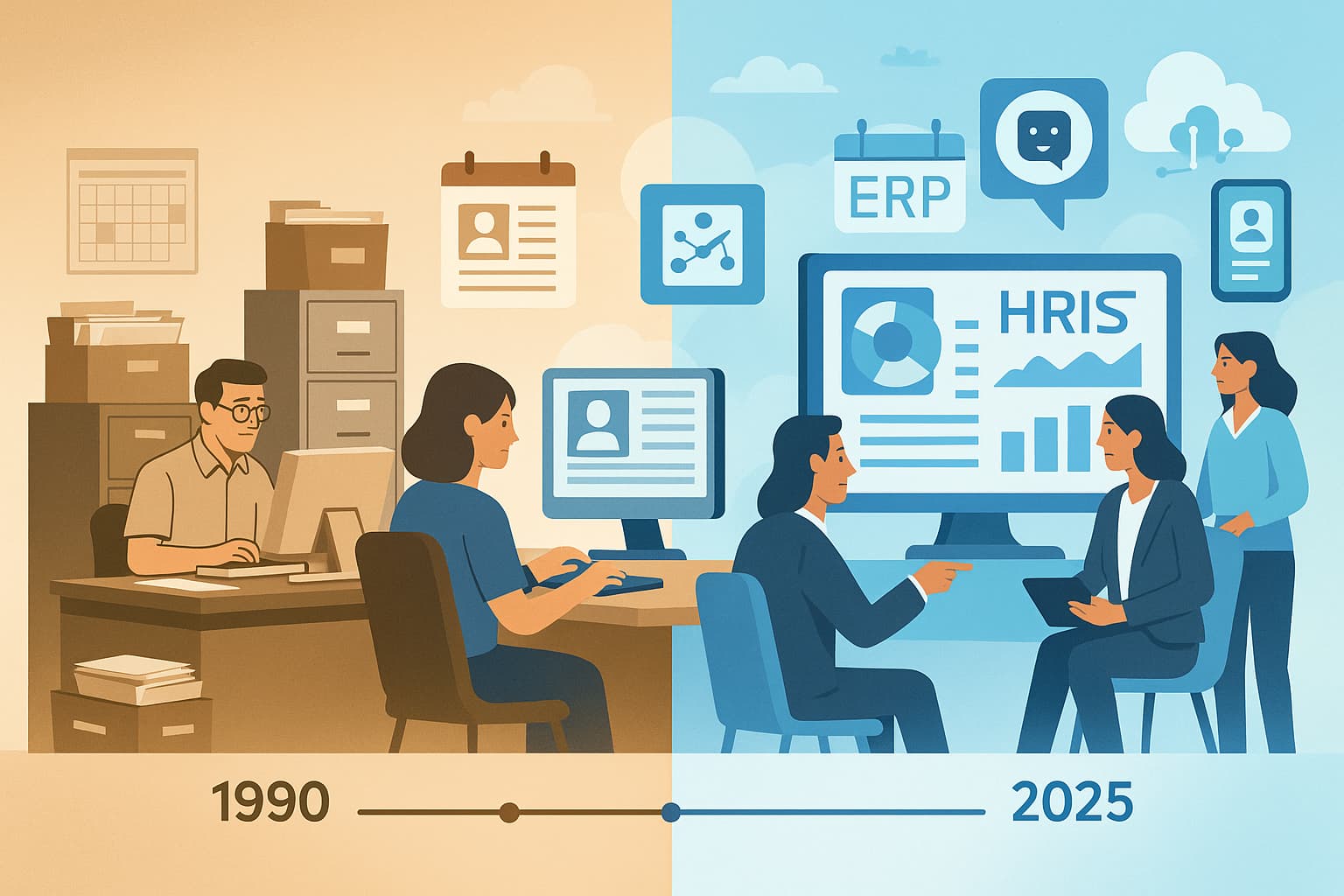Human Resource Information Systems, commonly known as HRIS human resources platforms, have undergone a dramatic transformation over the last three decades. From the early days of database-driven record-keeping to today’s AI-powered cloud ecosystems, the timeline of HRIS evolution reflects how businesses adapt to technology to better manage their most valuable asset: people.
1990s – The Legacy Era Begins
The concept of HRIS emerged as large enterprises began digitizing payroll and basic employee data. These early systems were expensive, installed on-premises, and operated with limited computing capabilities. HR professionals could use these tools to manage pay slips, tax records, and attendance but lacked real-time insights or flexibility.
2000–2005 – The ERP Wave
As the millennium turned, HR departments saw the rise of integrated Enterprise Resource Planning (ERP) systems that included HR modules. Giants like SAP and Oracle led the way, offering centralized data control. HRIS became more accessible to medium-sized organizations, helping streamline operations like benefits administration, compliance, and performance records.
2006–2010 – Web-based HR Information Systems
The rise of the internet brought about browser-based HR software, making it easier for companies to roll out HRIS without heavy IT investments. Cloud hosting became an emerging trend, reducing dependency on internal servers and making data available remotely. Systems started offering employee self-service portals, where staff could update their profiles, view pay stubs, or request leave.
2011–2015 – The Age of SaaS HR Solutions
Software-as-a-Service (SaaS) disrupted the HR tech landscape. Companies like Workday, BambooHR, and Zoho People introduced lightweight, scalable solutions. These platforms were more user-friendly and allowed customization without deep tech know-how. Small businesses finally had cost-effective HRIS options. The focus shifted to user experience, automation, and mobile-first interfaces.
2016–2020 – Analytics, Integration, and Smart Features
This era marked a shift from operational tools to strategic enablers. HR professionals could now extract meaningful insights using built-in analytics dashboards. Systems integrated with job boards, learning management tools, and communication apps like Slack or Teams. AI made its initial mark with features like resume parsing, chatbots for recruitment, and predictive performance management.
2020–2022 – The Pandemic Reset
COVID-19 accelerated digital transformation like never before. Remote work forced companies to re-evaluate their HRIS capabilities. Cloud-native, mobile-accessible HR software became essential. Time tracking, mental wellness modules, and remote onboarding workflows were added to support hybrid teams. HR software needed to be more than functional—it had to be empathetic and adaptive.
2023–2025 – Intelligence-Driven HR
Today’s HR information systems go beyond managing records—they help design people strategies. AI and machine learning now enable talent forecasting, skill gap analysis, and engagement prediction. Tools suggest training based on role changes, predict attrition risk, and provide sentiment analysis from employee feedback. Personalization is at the heart of every experience—HRIS now empowers individuals while guiding leadership decisions.
What’s Next?
Looking ahead, HRIS systems are expected to become proactive rather than reactive. We anticipate systems that blend with wearable tech for wellness tracking, offer voice-command functions, and use generative AI to automate entire hiring workflows. Compliance and security will remain top priorities, with blockchain potentially enhancing data transparency and control.
Final Thoughts
The journey from spreadsheets to intelligent platforms tells a larger story: HR has transformed from administrative support to a strategic business driver. As technology continues to evolve, so will the expectations from HR systems. Organizations that embrace this evolution not only boost HR productivity but also create environments where people thrive.
Explore Modern HR Software
If you're planning to upgrade or implement your first HRIS system, now is the time. At HRweb, we specialize in delivering smart, cloud-powered HR software that evolves with your needs. Visit HRwebSoftware.com to see how we’re redefining modern workforce management.
